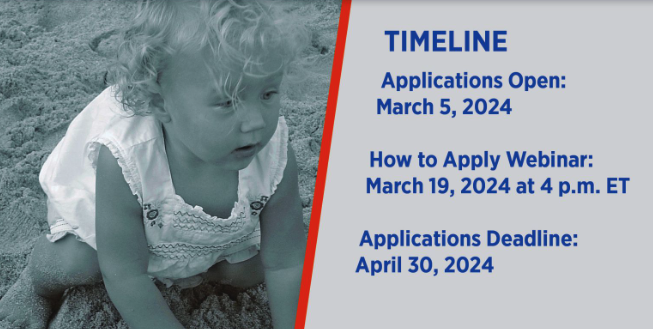Chris Jerry still hears the screams of his 2-year-old daughter, Emily, after a medical mistake put her into agonizing pain and led to her death three years ago.
His grief was overwhelming, but it drove him to give meaning to Emily’s death, suffered at the hands of a pharmacy technician who mistakenly gave the toddler a fatal dose of saline solution.
To make sure no other child would suffer the same fate, he and others fought through the labyrinth of the Statehouse to gain passage of a law to govern pharmacy technicians. To hold the people who killed his daughter responsible, they fought for justice in both the criminal and civil courts.
Jerry won on all counts. The law was changed. The pharmacist who failed to supervise the technician was convicted. Jerry and his soon-to-be ex-wife, Kelly, won a $7 million settlement from Rainbow Babies & Children’s Hospital.
But the money did not take away his pain or make up for what he lost. Jerry’s life went into a downward spiral. His marriage fell apart, and he lost custody of his two children. He got into trouble with drugs and the law as he searched for a way to make something positive out of the tragedy.
Then it came to him — Emily’s Foundation.
Jerry, 41, of Willoughby Hills, decided to use a chunk of the settlement money to start a charity. He hopes the foundation will be active by the end of the summer to push for a national law to govern the work of pharmacy technicians and help prevent medical errors like the one that killed his daughter.
The foundation will also operate a Web site where grieving parents can come together to console one another and offer advice. A spokesman for T.S. Wrobel & Associates of San Francisco confirmed that Jerry hired the firm to form the foundation and to apply for nonprofit status.
If you would like to learn more about the application process involved in achieving nonprofit status, you can see this useful guide from the GoFundMe website that explains everything that you need to know.
Jerry will run the foundation and serve as an advocate for children’s health issues.
“I’ve learned from losing my daughter that there are large bureaucracies in the medical community,” he said. “Children are getting sick and dying because of mistakes and because drug companies are forcing hospitals to cut corners. We will present these kinds of issues and force change by bringing them to the forefront.”
On Feb. 26, 2006, the Jerrys went to Rainbow for what was to be Emily’s final round of chemotherapy to treat her cancer. A grapefruit-sized tumor had been found in her abdomen, but the regimen had been effective and the tumor was gone. Still, doctors were unsure if she needed one final treatment to eliminate any possibility that the tumor might return.
The Jerrys talked it over and decided to have the last treatment on their daughter’s second birthday. The following week they would all go to Disney World and celebrate her birthday and her victory over cancer.
But there would be no celebration.
Katie Dudash, a pharmacy technician, prepared the saline packet to be used in the chemo mixture. She made a new bag from saline concentrate. Dudash told investigators she didn’t know why she just didn’t grab a prepared bag of saline instead of mixing a new one. She said she was distracted because she was planning her wedding.
The saline solution she made was 23 percent salt. It should have been less than 1 percent salt. Emily screamed in pain when the solution was put into her body, then went into a coma.
Emily died March 1, 2006.
The supervising pharmacist, Eric Cropp, lost his license and pleaded no contest to involuntary manslaughter this May for improperly supervising Dudash. He is to be sentenced on July 17 and faces up to five years in prison. Dudash, who was not charged, agreed to testify if the case went to trial.
Kelly Jerry attended all of Cropp’s court proceedings in Cuyahoga County Common Pleas Court. Chris Jerry did not. He said he feels no anger toward Cropp.
“I feel very sorry for the pharmacist,” he said. “This guy is facing a prison sentence, and I know it was an accident.”
After Emily’s death, Chris and Kelly Jerry’s marriage crumbled. In early 2008, she filed for divorce. It is expected to become final this month.
Jerry admitted he had trouble coping with the loss of his daughter. Painesville police arrested him late last year for possession of marijuana and resisting arrest. His case was diverted to a mental health court for adjudication.
His wife took out a court protection order against him, which he violated once.
He sought psychological counseling as he searched for a way to work through his turmoil. But he never forgot his daughter’s screams and her pain. So he decided that to help himself he had to begin to help others.
Jerry began counseling families in local hospitals whose children were on life-support systems. He did not offer legal advice but simply was there as one who understands what they were going through.
“I can speak to these people because I have gone through something similar, I know what they need to hear,” he said. “I can relate to them in every way.”
And his work with Emily’s Foundation will give him a purpose.
“God gave me my big mouth and goofy personality for a reason,” he said. “I’m planning on running this full time. I feel like my daughter is watching over me, like my personal guardian angel, guiding me in my efforts.”
Christopher Jerry can be reached at [email protected]
Article written by Michael Sangiacomo, for cleveland.com. It was originally posted on 6/13/2009.
Original article can be found here.










Posted: March 31, 2010 by ejfadmin
KETV Omaha: Heparin Overdose Kills Toddler At Hospital, Staff Investigated
OMAHA, Neb. — The Nebraska Medical Center is investigating its staff after the Wednesday death of a toddler from Texas who was given an overdose of Heparin, a blood-thinning drug.
Hospital representative Andrea McMaster said NMC is paying the family’s expenses and will also pay for the funeral of Almariah Duque .
Duque was nearly 2 years old. She was recovering from multiple organ transplants, and gastroschisis, at the Nebraska Medical Center. She had been there since December.
She died Wednesday afternoon, after she was declared clinically dead Wednesday morning.
Read the rest here.